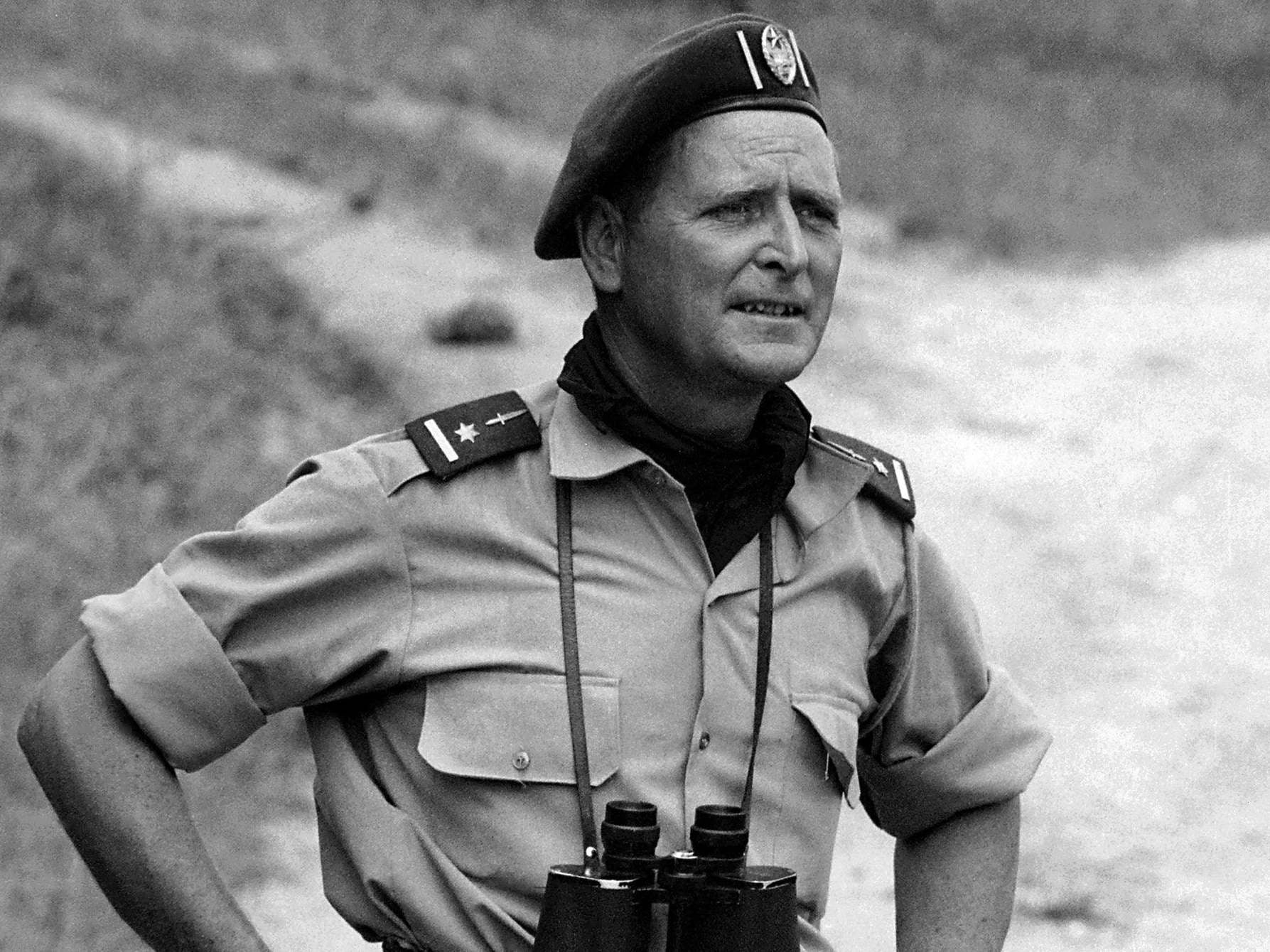‘Mad’ Mike Hoare: Mercenary and inspiration for The Wild Geese
He gained notoriety for his role in quelling an uprising in Congo but was later jailed after a failed coup attempt in the Seychelles

Your support helps us to tell the story
From reproductive rights to climate change to Big Tech, The Independent is on the ground when the story is developing. Whether it's investigating the financials of Elon Musk's pro-Trump PAC or producing our latest documentary, 'The A Word', which shines a light on the American women fighting for reproductive rights, we know how important it is to parse out the facts from the messaging.
At such a critical moment in US history, we need reporters on the ground. Your donation allows us to keep sending journalists to speak to both sides of the story.
The Independent is trusted by Americans across the entire political spectrum. And unlike many other quality news outlets, we choose not to lock Americans out of our reporting and analysis with paywalls. We believe quality journalism should be available to everyone, paid for by those who can afford it.
Your support makes all the difference.Mike Hoare, known universally by the moniker “Mad Mike”, was the mercenary whose African military adventures were immortalised in the film The Wild Geese. Hoare, who has died age 100, was involved in two dramatic armed campaigns, one which brought him fame and the other which led him to jail.
Thomas Michael Hoare was born in 1919 in Calcutta (now Kolkata) to Irish-born Aileen and Thomas Hoare, a boatman on the Hooghly River. He had been training as an accountant but was pleased to be called up for wartime military service, joining the London Irish Rifles. Moving to the Royal Armoured Corps he was promoted to second lieutenant. He saw action at the Battle of Kohima in India and in Burma (Myanmar).
By the end of the war he had attained the rank of major and on demob emigrated to South Africa, continuing in accountancy.
In 1961 Hoare met Moise Tshombe, president of the State of Katanga, a short-lived breakaway republic from the former Belgian colony Congo-Leopoldville (now Democratic Republic of the Congo). Three years later followers of the late Congolese prime minister Patrice Lumumba rose up in what became known as the Simba Rebellion. Tshombe, now Congolese prime minister, sought help from Hoare in crushing the rebel uprising in Stanleyville (now Kisangani).
Hoare gathered together a group of some 300 former soldiers and untrained chancers, dubbing them the Wild Geese, a nod to the Irish Catholic soldiers who had served in continental Europe in the 17th and 18th centuries.
The Armee Nationale Congolaise (ANC) had fled Stanleyville leaving behind weapons and vehicles. The ensuing slaughter by the Simba shocked even Hoare, who wrote: “The mayor of Stanleyville, Sylvere Bondekwe, a greatly respected and powerful man, was forced to stand naked before a frenzied crowd of Simbas while one of them cut out his liver.” Working with Belgian troops the Wild Geese were eventually successful in driving out the Simba rebels.
Hoare’s mercenaries simultaneously and inadvertently became involved in Operation Dragon Rouge, a two-day rescue campaign which saved more than 1,800 Americans and Europeans and 400 Congolese stranded in the city. Hoare later recalled: “Taking Stanleyville was the greatest achievement of the Wild Geese. There is only so much 300 men can do, but here we were, part of a very big push and clearing the rebels out of Stan was a major victory for our side.”
Hoare was promoted to lieutenant colonel in the Armee Nationale Congolaise and continued to lead his own unit from July 1964 to November 1965. He later wrote: “I had wanted nothing so much as to have 5 Commando [Hoare’s unit] known as an integral part of the ANC, a 5 Commando destined to strike a blow to rid the Congo of the greatest cancer the world has ever known – the creeping, insidious disease of communism.”
Hoare’s exploits in the Congo were adapted as the film The Wild Geese (1978), directed by Andrew V McLaglen. The box-office hit starred Richard Burton as Col Allen Faulkner, modelled on Hoare.

At the age of 63 Hoare had retired to Hilton, KwaZulu-Natal in South Africa and should have hung up his boots and gun for good. But he could not resist the prospect of another adventure.
On 25 November 1981 a group of 54 mercenaries, led by Hoare, arrived in the Seychelles, at the invitation of exiles in South Africa. Their objective was to overthrow France-Albert Rene, who had recently taken over as president.
Disguised as a rugby club on tour, their cover was blown when one of the squad joined the “something to declare” queue by mistake, and an AK-47 rifle was discovered by customs officials in his luggage.
A fierce gun battle followed. Hoare hijacked an Air India Boeing 707 that had come in to refuel and demanded that the group be flown back to Durban. He was sentenced to 10 years in prison for his role in the hijacking but released in 1985 after serving just 33 months in jail, following the grant of a presidential amnesty.
Hoare penned memoirs including The Seychelles Affair (1986) about the failed coup attempt and Congo Mercenary (2008) on his earlier more successful exploits. The Last Days of the Cathars (2013) is a fictionalised account of a Christian sect living in southern France during the Middle Ages, a story that had fascinated Hoare in later life.
Hoare married Elizabeth Stott in 1945 and had three children. He subsequently married Phyllis Sims (died 2009), with whom he had two children. He is survived by his children
Thomas Michael Hoare, mercenary and accountant, born 17 March 1919, died 2 February 2020
Join our commenting forum
Join thought-provoking conversations, follow other Independent readers and see their replies
Comments